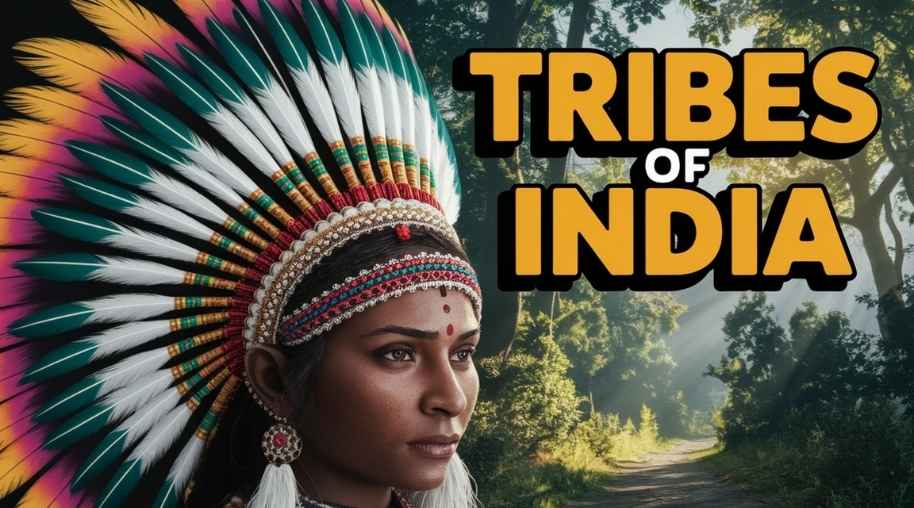ST Full Form-Scheduled Tribe
by Shashi Gaherwar
0 2201
Scheduled Tribes in India: History, Rights, Challenges, and Government Policies
Scheduled Tribes (STs) are indigenous communities in India recognized by the Constitution for their distinct social, cultural, and economic status. These communities have historically faced marginalization, socio-economic disadvantages, and discrimination, prompting special provisions for their protection and development.

The term "Scheduled Tribes" was first used in the Government of India Act, 1935, and later incorporated into the Indian Constitution under Article 366(25). This article explores the history, rights, challenges, government initiatives, and the role of STs in India's development.
Definition and Identification of Scheduled Tribes
The Constitution identifies Scheduled Tribes based on:
- Primitive Traits and Distinct Culture: Unique traditions and lifestyles.
- Geographical Isolation: Residing in remote or forested areas.
- Social and Economic Backwardness: Limited access to resources and opportunities.
- Shyness of Contact: Minimal interaction with mainstream communities.
The President, in consultation with state governments, notifies STs for each state and union territory. The 2011 Census reports over 705 recognized Scheduled Tribes, constituting 8.6% of India’s population.
Historical Background
Scheduled Tribes have rich cultural traditions and indigenous knowledge, with close ties to nature. However, colonial policies led to land displacement, loss of autonomy, and economic exploitation. Post-independence, the Indian government introduced constitutional safeguards and welfare programs to promote their socio-economic development.
Constitutional Safeguards and Rights of Scheduled Tribes
The Indian Constitution provides several protections for STs:
- Educational & Employment Rights: Reservations in education and government jobs under Articles 15(4) and 16(4), plus scholarships for tribal students.
- Political Representation: Reserved seats in Lok Sabha and State Assemblies (Articles 330, 332) and formation of Scheduled Areas and Tribal Advisory Councils (Fifth and Sixth Schedules).
- Land and Forest Rights: The Forest Rights Act, 2006, grants ownership over forest land and resources, protecting against land alienation.
- Social and Cultural Safeguards: Preserves indigenous languages, customs, and supports tribal artisans and farmers.
Challenges Faced by Scheduled Tribes
Despite safeguards, STs face significant challenges:
- Land Displacement and Loss of Livelihood: Industrialization and mining displace communities, limiting access to land and forest resources.
- Poverty and Unemployment: High illiteracy and lack of skill development restrict job opportunities, leaving many dependent on subsistence farming.
- Health and Nutrition Issues: Malnutrition, high infant mortality, and inadequate healthcare facilities persist.
- Educational Backwardness: Low literacy due to language barriers, poor infrastructure, and high dropout rates, especially among girls.
- Social Discrimination and Exploitation: STs face exclusion, violence, and issues like bonded labor and human trafficking.
Government Schemes and Policies for Scheduled Tribes
The government has implemented various welfare programs for STs:
- Educational Schemes: Eklavya Model Residential Schools (EMRS) and Post-Matric/Pre-Matric Scholarships for quality education.
- Economic and Employment Initiatives: TRIFED supports artisans, and Stand-Up India provides loans for ST entrepreneurs.
- Health and Nutrition Programs: National Tribal Health Mission and nutrition schemes address malnutrition and healthcare access.
- Forest and Land Rights: The Forest Rights Act, 2006, ensures land ownership and forest access.
- Infrastructure and Livelihood Development: Pradhan Mantri Van Dhan Yojana and Integrated Tribal Development Projects (ITDP) promote entrepreneurship and infrastructure.
Role of Scheduled Tribes in India’s Development
STs contribute significantly to India’s growth:
- Preservation of Indigenous Knowledge: STs aid biodiversity conservation and sustainable resource management, with valuable knowledge in medicine and agriculture.
- Contribution to Handicraft and Arts: Tribal textiles, pottery, and artwork enhance India’s cultural heritage, promoted globally.
- Participation in Governance: Tribal leaders engage in policy formulation and local governance through Panchayati Raj and Self-Help Groups.
Scheduled Tribes are an integral part of India’s social, cultural, and economic fabric. Despite historical challenges, government policies and empowerment programs have improved their socio-economic conditions. Effective implementation of welfare schemes, protection of land rights, and access to quality education and healthcare are critical for their holistic development. By promoting tribal heritage, skills, and traditions, India can ensure inclusive growth and sustainable development for Scheduled Tribes.
Further Learning Resources
If you’re passionate about building a successful blogging website, check out this helpful guide at Coding Tag – How to Start a Successful Blog. It offers practical steps and expert tips to kickstart your blogging journey!
For dedicated UPSC exam preparation, we highly recommend visiting www.iasmania.com. It offers well-structured resources, current affairs, and subject-wise notes tailored specifically for aspirants. Start your journey today!

Share:








Comments
Waiting for your comments